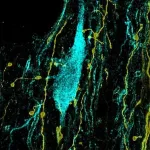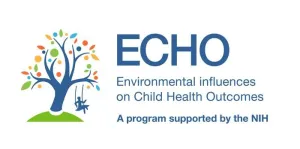(Press-News.org) ‘I’m not gonna do this again’, we often say when faced with negative feedback, adverse effects, or disappointing outcomes. Thus, we attempt to learn from such negative experiences. This principle is also a cornerstone of our education system: failing an exam ought to encourage students to do better next time.
How does the brain achieve this type of learning? Positive and negative reinforcement appear as two sides of the same coin in parts of the brain’s valuation system. Notably, some neurons that release the neuromodulator ‘dopamine’ represent outcomes better vs. worse than expected with increase or decrease of their activity, respectively. At the same time, ample accumulating evidence suggests that other parts of the brain handle ‘negative’ and ‘positive’ fundamentally differently.
Negative experiences, when encountered, often have an arousing effect: they do not leave us indifferent or heedless. Beyond this general arousal, specific parts of the neocortex are activated that allow us to pay attention to relevant features, and eventually, draw consequences and learn – a concept sometimes called ‘attention for learning’. When focusing on the negative side of things, we may coin this ‘attention for aversive learning’.
A team of neuroscientists at the HUN-REN Institute of Experimental Medicine Budapest, Hungary, led by Principal Investigator Balazs Hangya MD PhD, asked which brain regions and neuron types might be responsible for ‘attention for aversive learning’. In a new study published today in Nature Communications, the team reports that long-range projecting inhibitory neurons that express the calcium-binding protein parvalbumin (PV) known for their capabilities of very fast activity, located in a deep brain nucleus called ‘the horizontal limb of the diagonal band of Broca’ or HDB play a key role in this process.
These HDB-PV neurons have previously been shown to convey arousing effects to the neocortex at both short and long time scales, and control fast cortical brain waves called gamma oscillations important for cognitive processes. Therefore, they appeared as good candidates for mediating ‘attention for aversive learning’. Hangya’s team showed that these neurons are indeed recruited by aversive events in experimental mice, like an unexpected puff of air on the face mice strive to avoid, or the odor of a fearful predator.
Such aversive events are obviously relevant for humans and animals alike, and thus activate a number of pathways evoking a series of consequences in the brain. First and maybe foremost, these events may represent a chance of lasting negative impact or even immediate danger, the probability of which should be mitigated by avoidance behaviors. Indeed, many of the neural pathways recruited by aversive inputs were found to drive active avoidance. Second, unexpected aversive events should increase arousal and attention by activating relevant parts of the neocortex, thus recruiting resources that enable coping with the situation. Third and crucial for survival in the long run, aversive events should induce learning to help avoid or reduce the impact of similar scenarios in the future. ‘Learning from negative experience is a deeply rooted, ancient strategy of survival. It is so strong that we, ourselves might experience sometimes that it can even override the effect of positive reinforcement’ adds Panna Hegedüs, first author of the study.
Hangya’s team used a technology called optogenetics, which can render specific cell types, in this case HDB-PV neurons, sensitive to light. These techniques enable precise activation or suppression of the activity of neurons by the timed delivery of light into the brain tissue via small optic fibers. They found that activating HDB-PV neurons did not cause avoidance behavior in mice, suggesting that this pathway is not involved in active avoidance like seeking a shelter, but more likely mediates attention and/or learning aspects induced by aversive stimuli. Indeed, when they optogenetically blocked the responses of the neurons to facial air puffs, mice failed to learn discriminating predictive auditory stimuli forecasting likely or unlikely air puffs. This experiment demonstrated that HDB-PV neurons are necessary to learn from aversive stimuli.
What brain circuit mediates this learning effect? Neurons do not act in isolation but are part of complex circuits with diverse input and output pathways. Hangya’s team, together with Gabor Nyiri and coworkers from the same institute, mapped the inputs to and outputs of HDB-PV neurons. They found that these cells integrate multiple sources of aversive information including prominent pathways from the hypothalamus and the brainstem raphe nuclei. In turn, they transmit integrated information to the so-called limbic system broadly responsible for behavioral and emotional responses, including the septo-hippocampal system important for storing and recalling episodic memories. Furthermore, the inhibitory HDB-PV cells mostly target other inhibitory neurons in these regions, thus likely relieving excitatory cells from inhibition allowing them to be more active – a ubiquitous brain mechanism called disinhibition.
In sum, the study suggests that long-range inhibitory HDB-PV neurons are recruited by aversive stimuli to serve crucial associative learning functions through increasing cortical excitability at specific target areas, probably by disinhibition. Thus, at least for aversive stimuli, HDB-PV neurons might be the physical substrate of the ‘attention for learning’ concept. ‘The dysregulation of processing positive and negative valence can be observed in different psychiatric disorders including anxiety and depression. Therefore, it is crucial to understand how negative valence is encoded in the brain and how it contributes to learning’, Panna Hegedüs concludes.
'Parvalbumin-expressing basal forebrain neurons mediate learning from negative experience' appers online in Nature Communications on 7 June 2024. The authors are: Panna Hegedüs, Bálint Király, Dániel Schlingloff, Victoria Lyakhova, Anna Velencei, Írisz Szabó, Márton Mayer, Zsofia Zelenak, Gábor Nyiri, Balázs Hangya. The paper can be obtained at: https://www.nature.com/articles/41467-024-48755-7.
END
Brain circuits underlying learning from negative experiences
2024-06-07
ELSE PRESS RELEASES FROM THIS DATE:
What’s going on in our brains when we plan?
2024-06-07
In pausing to think before making an important decision, we may imagine the potential outcomes of different choices we could make. While this “mental simulation” is central to how we plan and make decisions in everyday life, how the brain works to accomplish this is not well understood.
An international team of scientists has now uncovered neural mechanisms used in planning. Its results, published in the journal Nature Neuroscience, suggest that an interplay between the brain’s prefrontal cortex and hippocampus allows us to imagine future outcomes in order to guide our decisions.
“The prefrontal cortex acts as a ‘simulator,’ ...
Robotic device restores wavelike muscular function involved in processes like digestion, aiding patients with compromised organs
2024-06-07
A team of Vanderbilt researchers has developed a wirelessly activated device that mimics the wavelike muscular function in the esophagus and small intestine responsible for transporting food and viscous fluids for digestion.
The soft-robotic prototype, which is driven by strong magnets controlled by a wearable external actuator, can aid patients suffering from blockages caused by tumors or those requiring stents. For example, traditional esophageal stents are metal tubes used in patients with esophageal cancer, mostly in an aging population. These patients risk food being blocked from entering the stomach, potentially ...
DOE announces new decadal fusion energy strategy
2024-06-07
WASHINGTON, D.C.—The U.S. Department of Energy (DOE) today marked the two-year anniversary of the Biden-Harris Administration's launch of the U.S. Bold Decadal Vision for Commercial Fusion Energy with the release of the DOE Fusion Energy Strategy 2024 and an event at the White House co-hosted by the White House Office of Science and Technology Policy.
At the inaugural event where the Bold Decadal Vision was unveiled, DOE launched a Department-wide initiative to develop a strategy for accelerating the viability of commercial fusion energy in partnership with the private sector. The newly released DOE Fusion Energy ...
Study identifies potential pathway to reducing breast cancer brain metastases
2024-06-07
A study led by researchers from the University of Arizona Cancer Center at UArizona Health Sciences identified a biological mechanism that could lead to more effective treatments for breast cancer that has metastasized to the brain.
By studying the metabolic differences between primary breast cancer cells and those that metastasize to the brain, they determined that autophagy was significantly upregulated in brain metastases. Autophagy is a cellular recycling process that cancer cells can use to stay alive when faced with stressful conditions such as those triggered by anticancer drugs.
“The prognosis for individuals with ...
How does oxygen depletion disrupt memory formation in the brain?
2024-06-07
When we learn something new, our brain cells (neurons) communicate with each other through electrical and chemical signals. If the same group of neurons communicate together often, the connections between them get stronger. This process helps our brains learn and remember things and is known as long-term potentiation or LTP.
Another type of LTP occurs when the brain is deprived of oxygen temporarily – anoxia-induced long-term potentiationor aLTP. aLTP blocks the former process, thereby impairing learning and ...
Study investigates relationship between phthalate exposure and high blood pressure, related complications during pregnancy
2024-06-07
Higher exposure to certain chemicals called phthalates is linked to an increased risk of pregnancy complications, including preeclampsia and eclampsia (PE/E) and other hypertensive or high blood pressure disorders, according to a study funded by the NIH Environmental influences on Child Health Outcomes program. Here are the key findings:
Doubling the levels of a specific molecule linked to exposure to phthalates found in PVC plastics and insect repellents—mono (3-carboxypropyl) phthalate (MCPP)—increased ...
YALE NEWS: Study finds no association between COVID-19 vaccines and stillbirths
2024-06-07
New Haven, Conn. — In a new study funded by the U.S. Centers for Disease Control and Prevention, researchers from Yale and 11 other institutions found “no association between COVID-19 vaccination and stillbirth.”
In a case-control study led by Yale School of Medicine’s Dr. Anna Denoble, researchers compared 276 stillbirths with 822 live births during a one-year period from February 2021 to February 2022. Their results, published June 6 in the journal Obstetrics & Gynecology, found no linkage between pregnant individuals ...
University of South Florida using AI to help combat malaria in Africa
2024-06-06
Media Contact:
John Dudley
(814) 490-3290 (cell)
jjdudley@usf.edu
TAMPA, Fla. (June 6, 2024) – University of South Florida researchers are using artificial intelligence to revolutionize mosquito surveillance to help combat malaria in Africa. Ryan Carney, professor of integrative biology, and Sriram Chellappan, professor in the department of computer science and engineering, will collaborate with an interdisciplinary team of researchers to advance malaria research and explore innovative solutions ...
Webb finds plethora of carbon molecules around young star
2024-06-06
An international team of astronomers has used NASA’s James Webb Space Telescope to study the disk of gas and dust around a young, very low-mass star. The results reveal the largest number of carbon-containing molecules seen to date in such a disk. These findings have implications for the potential composition of any planets that might form around this star.
Rocky planets are more likely than gas giants to form around low-mass stars, making them the most common planets around the most common stars in our galaxy. Little is known about the chemistry of such worlds, which may be similar to or very different from Earth. By studying the disks from which such planets form, astronomers hope ...
Study finds home health aides struggle with mental health
2024-06-06
Study Finds Home Health Aides Struggle with Mental Health
Home health aides (HHAs) are vulnerable to stress, isolation and depressive symptoms, which impact their own health as well as their patients’ desire to age in place, according to Weill Cornell Medicine researchers. HHAs are a rapidly growing workforce trained and certified to provide personal and medical care, as well as emotional support, in the home.
“As a doctor, I’ve learned that home health aides are a critical part of patients’ well-being,” said senior author Dr. Madeline Sterling, ...






